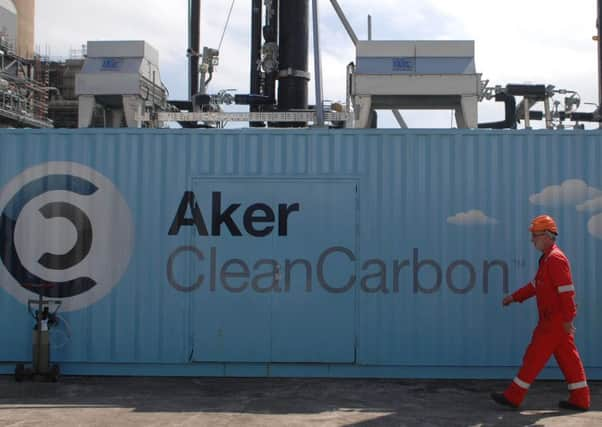Ilona Amos: Carbon capture best hope of combating climate change


But as the clock ticks and extreme weather events become increasingly commonplace, the possibility of avoiding the most catastrophic effects looks ever more challenging. But the science community is still working hard to find solutions that may help slow or even reverse man’s harmful part in the process.
One great hope is carbon capture and storage (CCS), which involves trapping gases produced by power generation and manufacturing and locking it up in subterranean rock formations. We even have our own dedicated research group, Scottish Carbon Capture & Storage, an independent collaboration between Heriot-Watt, Aberdeen, Edinburgh and Strathclyde universities, and the British Geological Survey.
Advertisement
Hide AdAdvertisement
Hide AdBut commercialising the technology is not cheap, and has been considerably hampered by Westminster’s decision to axe a £1 billion grant for development late last year. The announcement prompted Shell to pull the plug on grand plans to create a scheme at the gas-fired power station in Peterhead, which was a bidder in the competition. The proposal involved using existing pipework to transport carbon dioxide from the plant to a disused North Sea gas field, where it would be injected into depleted reservoirs.
A recent report from the National Audit Office estimates that HM Treasury’s decision to withdraw the funding could add £30 billion to the cost of decarbonising the UK. Now, though, new research from the University of Edinburgh is being hailed as an important contribution in the drive to deliver CCS as a viable and cost-effective mitigation for climate change.
Geoscientists have discovered that carbon dioxide has a distinctive chemical fingerprint, depending on how it has been produced and the methods used to secure it. This allows gas created through burning of coal, oil, natural gas or biomass to be easily – and cheaply – distinguished from natural sources already present at or near geological storage sites and drinking water aquifers. The findings mean experts will be able to monitor man-made carbon dioxide emissions and ensure they are effectively contained deep underground without the need to add expensive chemical tracers.
Another cost-saving move, according to SCCS experts, is to exploit existing “industrial clusters” to create CCS networks. This involves reusing natural gas pipelines to transport carbon dioxide to identified storage sites. Analysis suggests the Grangemouth complex, which has the highest concentration of emissions and short connection routes a gas pipeline, could alone capture and deliver around two million tonnes of carbon dioxide every year.
The world’s first commercial-scale CCS plant was switched on in 2014, at a coal-fired power station in Canada. The withdrawal of UK government funding has been described by SCCS director Stuart Haszeldine as premature and lacking foresight. He claims “CCS is unavoidable” if we want to hit climate goals, but the UK’s short-termism will leave us lagging behind and paying hand over fist to catch up. The smart move is to speculate now to accumulate later.
The UK cannot become a low-carbon economy overnight. The transition needs long-term government investment. As the professor says, this is not an optional extra – it’s essential.